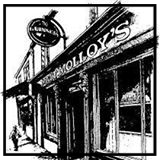BIOGRAPHY
THROUGH FRIENDSHIP WITH PADDY MOLONEY, MATT MOLLOY WAS ALREADY FAMILIAR WITH THE CHIEFTAINS WHEN HE JOINED IN 1979 AS ONE OF THE TWO NON – DUBLINERS IN THE GROUP, REPLACING MICHAEL TUBRIDY ON FLUTE.
During the burgeoning folk scene of the 1970’s, Matt was a founding member of the famous folk group, The Bothy Band. After the Bothy Band, Matt appeared briefly with the reformed group, Planxty. Matt has released several highly acclaimed solo albums and has worked with other accomplished musicians. He has teamed up with Paul Brady, Tommy Peoples, Micheál Ó Súilleabháin, Dónal Lunny and the Irish Chamber Orchestra among other artists.
In addition to playing, Matt owns a pub in Westport, County Mayo, Ireland called Matt Molloy’s, where he has recorded a live session album. His pub is well known for having sessions including many different musicians.
The Chieftains, Boil The Breakfast Early is his first album with the Chieftains. Matt Molloy comes from a strong musical background, of the famed fiddle and flute playing tradition of North Connacht. Before joining the Chieftains, Matt was already known as an accomplished flautist playing with a number of groups and session artists.
Matt was born in Ballaghadereen, County Roscommon, an area well known for flute players. Matt began playing the flute at age 8 and by the age of 18, he had won the All-Ireland Flute Championship and had a string of successes in National Fleadh Cheoil and Oireachtas. He moved to Dublin in the mid 1960’s where he started playing in the music scene and became acquainted with Paddy Moloney. He was invited to join The Chieftains in 1979.
TIN WHISTLE
In addition to the flute, Matt plays the tin whistle, though not very often. The tin whistle is a vertical fipple-flute. The fipple is the duct in the mouthpiece that directs air to produce sound. The first tin whistles of the 1800’s were rolled plates of tin forming a tube, with a wooden block in the mouthpiece carved to form the fipple. Today’s tin whistles are made of metals including nickel-silver, brass and aluminum. They have a range of two octaves, and are made in a wide range of keys.
FLUTE
Matt has been playing the Irish flute since he was eight, and has become one of the masters. The flutes used in traditional Irish music are called concert flutes. These were the standard instruments found in orchestras during the 19th century, prior to the introduction of Boehm system flutes circa 1843. They are conical-bore, transverse flutes, typically constructed of blackwood. They are played using ‘simple system’ (keyless) fingering or ‘old system’ (four to eight keys) fingering. They have a more robust and breathy tone compared to metal flutes.
THE CHIEFTAINS. FROM L-R SEÁN KEANE, PADDY MOLONEY, KEVIN CONNEFF & MATT MOLLOY

